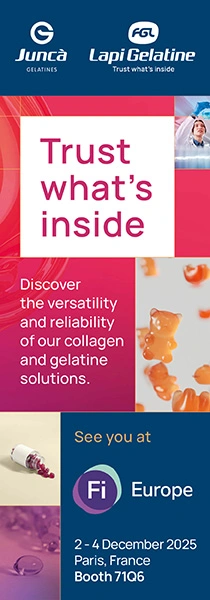From yeast to color: Phytolon to replace artificial dyes with fermentation-derived natural food pigments
 Natural food colors are also in demand for dairy alternatives and meat substitutes (Image Credit: Sarit Goffen).
Natural food colors are also in demand for dairy alternatives and meat substitutes (Image Credit: Sarit Goffen).06 Oct 2023 --- Israeli biotechnology start-up Phytolon has secured additional funding to launch its innovative natural food colors formulated using precision fermentation of yeast. This comes when consumers express their preference for healthy and sustainable food through the demand for clean label and eco-friendly food ingredients.
The F&B industry continues to steadily deviate away from artificial colors, giving natural color producers a chance to experiment with quality, stable color solutions derived from natural sources.
Speaking to Food Ingredients First, Halim Jubran, co-founder and CEO at Phytolon, says: “The food coloring space is particularly interesting in this context due to the need to replace the artificial dyes that are associated with health concerns and regulatory push-back on the one hand, and due to the industry’s requirements for cost-efficient and high-quality solutions.”

He adds that there are “relatively limited solutions that current natural food colors offer compared to the artificial dyes.”
Phytolon plans to use the cash injection to support its commercial activities toward the first launch of its natural food colors in the F&B markets.
 Tal Zeltzer, co-founder & CTO and Halim Jubran, co-founder & CEO of Phytolon (Image Credit: Phytolon).The financial details of the investment have not been revealed at the time of publication.
Tal Zeltzer, co-founder & CTO and Halim Jubran, co-founder & CEO of Phytolon (Image Credit: Phytolon).The financial details of the investment have not been revealed at the time of publication.
Natural claims reign in consumers’ minds
Bright and bold hues in food colors with natural claims have attracted consumers for quite some time.
In a recent conversation with us, Givaudan highlighted that consumers look for cooking and eating experiences that give them guiltless indulgence, promote ethical and environmental commitments and engage all the senses. Natural colors check all of these boxes.
In the same vein, GNT recently underlined that two-thirds of Asia-Pacific consumers say they like food with intense and bright colors, while 77% say it is “important” that products do not contain artificial colors.
Additionally, as plant-based eating gains momentum, natural food colors are also in demand for dairy alternatives and meat substitutes. For instance, natural brown and red coloring solutions in plant-based meat can help recreate an authentic color transition from red to brown during cooking. In plant-based beverages, natural warming vanilla and egg-like hues with nutty brown tints can help cover the chalky or gray appearance.
Phytolon leverages a fermentation-based technology by which it utilizes the baker’s yeast (Saccharomyces cerevisiae) to produce natural and bright pigments that are found in nature in various classes of plants like beet, cactus fruit, dragon fruit and more.
Interestingly, baker’s yeast has been widely used by the F&B industry in bakery applications alongside bread improvers and leaving agents for a long time. So, Phytolon’s idea of employing the microorganism for formulating natural colors is noteworthy.
Extending supply capabilities
For the funding, the start-up received investment from Nextgen Nutrition Investment Partners supported by Dunedain Ventures. The company’s shareholders, EIT Food and Steve Dubin, chairman of Phytolon, have also invested in the company.
“Phytolon was not actively raising but rather saw an opportunity in partnering with impactful investors who bring vast experience in the core of the industry. The funds will be used to support the company’s commercial activities and the communication with the future clients,” Jubran tells us.
Last year, the company secured US$14.5 million in funding, led by DSM Venturing, to distribute its wide range of natural food colors. Phytolon uses precision fermentation to utilize baker’s yeast to produce natural and bright pigments (Image Credit: Sarit Goffen).
Phytolon uses precision fermentation to utilize baker’s yeast to produce natural and bright pigments (Image Credit: Sarit Goffen).
Since then, the biotech innovator has extended its supply capabilities and entered a manufacturing agreement at an industrial scale with a contract manufacturing organization that ensures resilient supply to clients.
It has also started an in-house facility for production and supply at a pilot scale and got the ball rolling by bolstering in-house capabilities for developing and scaling natural ingredients by fermentation.
“Phytolon has been scaling its production processes to meet the food industry’s demand for a sufficient supply of natural food colors worldwide. Currently, the R&D work mainly focuses on extending the assimilation of the wide range of food colors in food brands,” underscores Jubran.
He also emphasized the importance of maintaining the quality of the natural pigments. “Open communication with the clients is key to choosing the right path for developing and formulating the colors to qualify them to meet the required quality standards in the different brands and food categories,” he concludes.
By Insha Naureen











